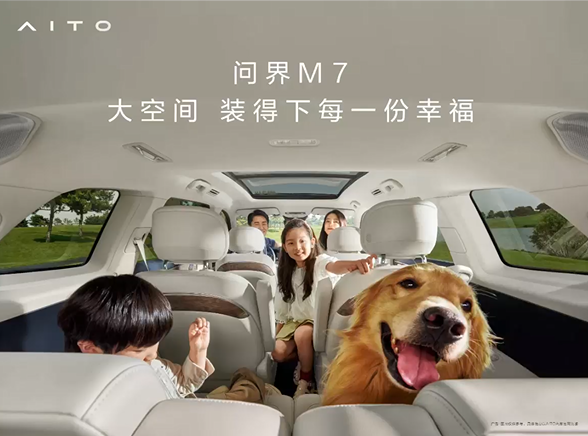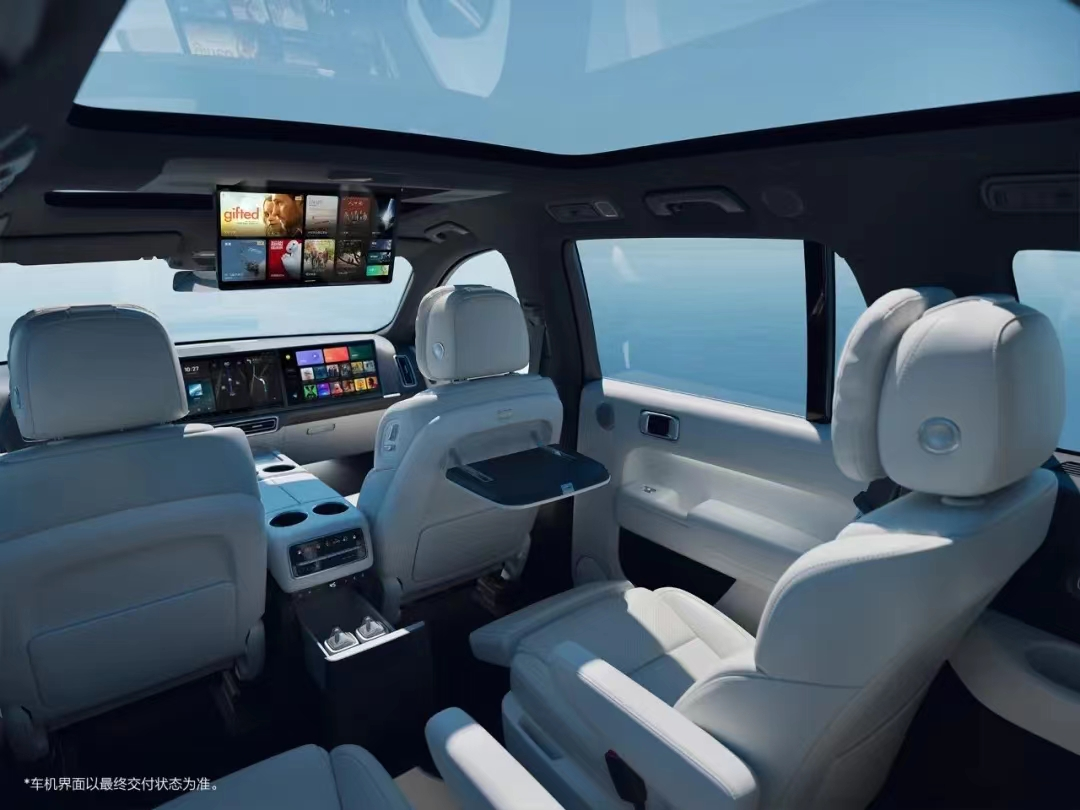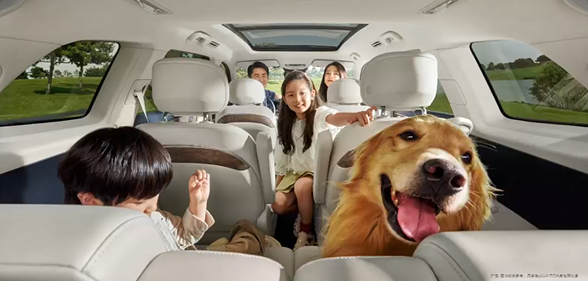Author: Mianwu Zhou
Editor: Zelin Leng
On May 30, 2022, at the Guangdong, Hong Kong, and Macau Greater Bay Area Auto Show, the CEO of Huawei’s Intelligent Automotive Solution BU, Chengdong Yu, said, “Although the exterior of the Wanjie M7 is compact, the interior space is very large, perfectly comfortable for leaders and bosses to sit in.”
However, it is obvious that the exterior limits the size of the interior space of the vehicle. In order to make the boss comfortable, sacrifices must be made in terms of the third row and the trunk.
On June 17th, AITO Automotive’s official public account released new interior images using a 2+2+2 six-seater layout. Is it as comfortable as Chengdong Yu said?

Is the Wanjie M7 Product Misaligned?
Judging from this official interior image alone, the Wanjie M7 is obviously aimed at family users, just like the ideal L9 for bottle-feeding.

For family users considering a three-row SUV, the third-row space is the most important product consideration.
With the ideal ONE as a comparison in the same price range, the space of the Wanjie M7 seems somewhat misaligned.
Photon Travel previously pointed out that since the Wanjie M5 has already demonstrated good overall product strength, the key point of the Wanjie M7 is in the third-row space. If the third-row space can be roughly the same as the ideal ONE, it will be very competitive.
The third-row space of the ideal ONE can accommodate adult men and women, although the former may find it slightly cramped, and the latter experience more comfortable riding.
Such space makes the seat arrangement of a three-generation family more flexible and can accommodate one child safety seat in each of the second and third rows, with one adult attending to each child, or two adults in the third-row seats.
The third-row space of the Ideal ONE is basically the minimum space requirement for realizing the above scenarios, and it is achieved at the expense of sacrificing the trunk space.
Now, looking at the official promotional image of the M7, a child and a dog are seated in the third row, and it is clearly visible that the child’s legs are already touching the seats, with a distance of about the width of the child’s legs between the second-row seats.
Judging from this image alone, even though a wide-angle lens was used to elongate the depth of field, it is hard to perceive that the space inside is very large, but rather it gives a feeling of being smaller.
This feeling seems to be somewhat different from what Chengdong Yu said.
At the same time, Chengdong Yu’s words also give the feeling that the Wanjie M7 is positioned for business purposes, and perhaps this mainly refers to the two-row version of the Wanjie. Earlier this year, the blueprint for the Dream Family, announced as an MPV, included a two-row four-seater version in addition to the three-row version.If the WENJIE M7 also has a two-row version, then it may truly have spacious room and allow the boss to sit comfortably.
The WENJIE M7 may be targeting both household and commercial users, but the small three-row space is a huge disadvantage for household users, and it has not yet revealed a strong attraction for commercial users.
Based on the information conveyed by the WENJIE M7, the product seems to be a bit out of place.
Competitors are now showing their swords
In the current market of three-row new energy vehicles, the mainstream models are the BYD Tang and the Ideal ONE.
BYD Tang released the Tang DM-i/p in May, and Ideal will also release a new product in June, both of which have significantly improved their product power from the past.
As a new energy vehicle at the same level, consumers will naturally compare the WENJIE M7 with its competitors. Although Huawei’s channels, brand, product development capabilities, and HarmonyOS are its advantages, perhaps these advantages alone are not enough.
Prior to the launch of the Ideal L9, many Ideal salespeople revealed to Photon Travel that the store inquiries have noticeably decreased due to the approaching release of the L9 launch event.
This indicates that there is a considerable proportion of Ideal ONE buyers who are not limited by a budget of just 300,000 RMB, but instead find that the Ideal ONE best meets their needs after comprehensive consideration.
The target demographic of Ideal ONE and L9 is very clear, i.e. families with two or three generations under one roof, and they have not yet encountered a real competitor in this market.
Photon Travel once believed that Huawei WENJIE M7 had this potential, but it now appears that it may not be able to compete in this market.
Therefore, the real competitors for users are likely to be the BYD Tang. By May, the Tang DM sold 6914 units, and BYD also unveiled the Tang DM-i/p in the same month.
The product highlights of the Tang DM-i/p are easily described: for as low as 205,800 RMB, users can buy the most fuel-efficient three-row hybrid car, and for 282,000 RMB, they can buy the most fuel-efficient three-row hybrid car with 252km of pure electric range. The only car that can achieve 0-100 km/h acceleration in 4.3 seconds, a pure electric range of 215 km, and 6.5L/100 km fuel consumption.
For consumers, buying a BYD Tang based on these highlights is a simple matter.
As of now, there is no car that can challenge BYD Tang’s fuel efficiency in the market of hybrid cars, just like no car company has done better than Ideal in satisfying the needs of families with multiple generations under one roof.
If the WENJIE M7 is simply a longer version of the M5 with a relatively small three-row space, then it will be difficult for the WENJIE M7 to find its own living space among the BYD Tang, Ideal ONE, and Ideal L9, at least not yet.
This article is a translation by ChatGPT of a Chinese report from 42HOW. If you have any questions about it, please email bd@42how.com.
